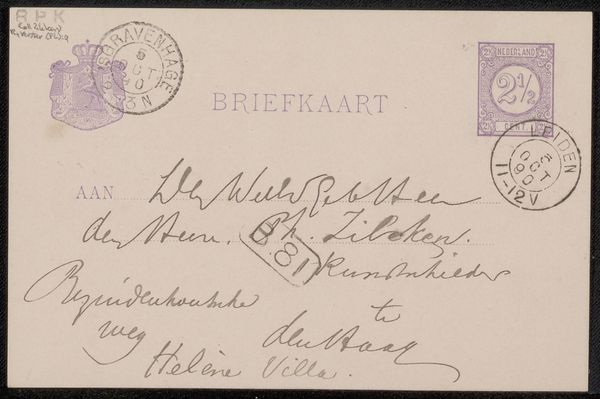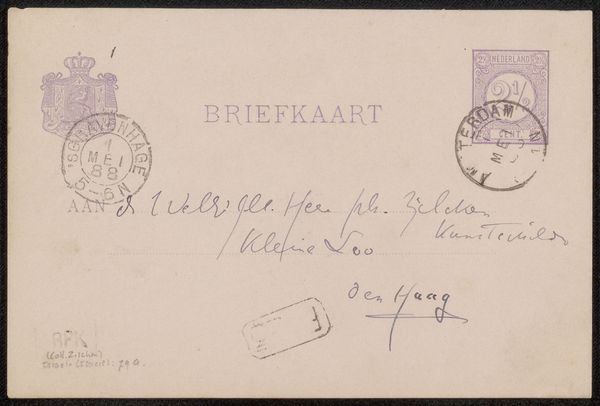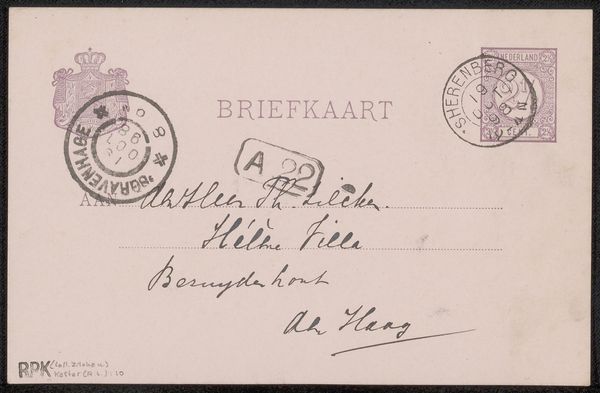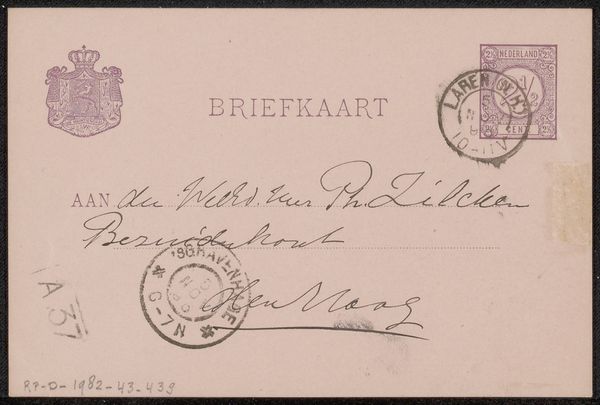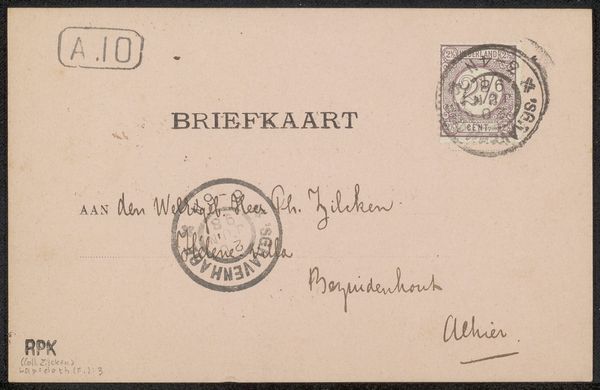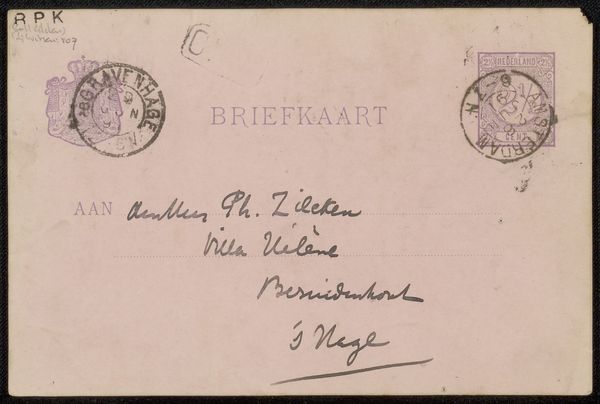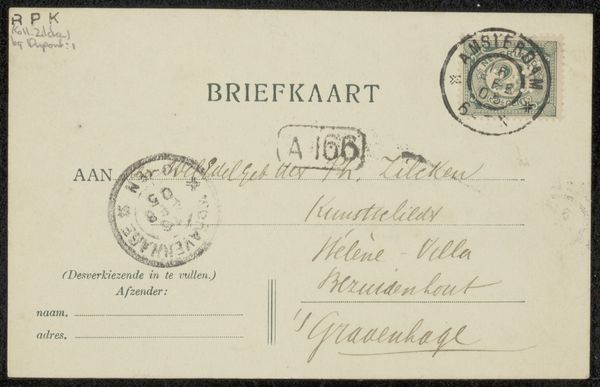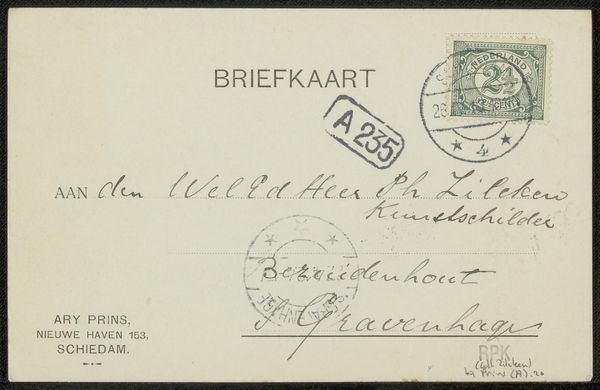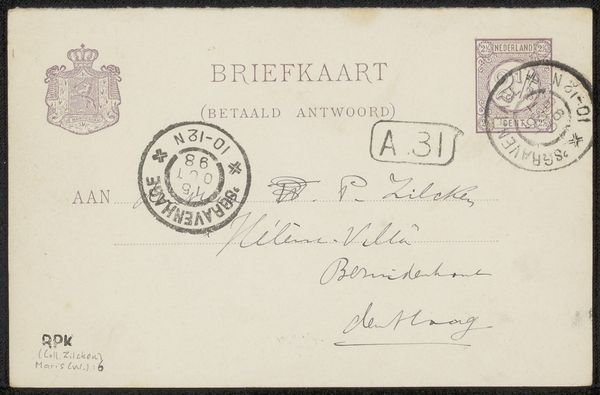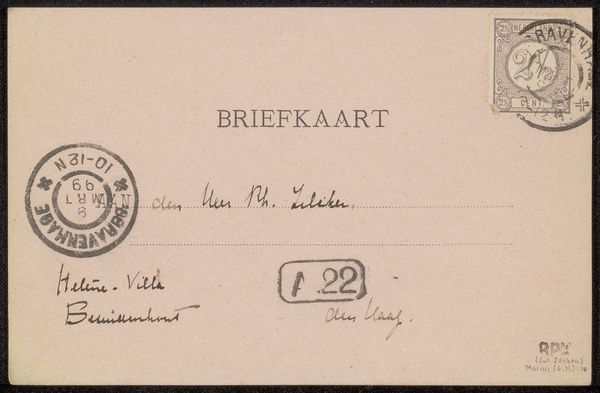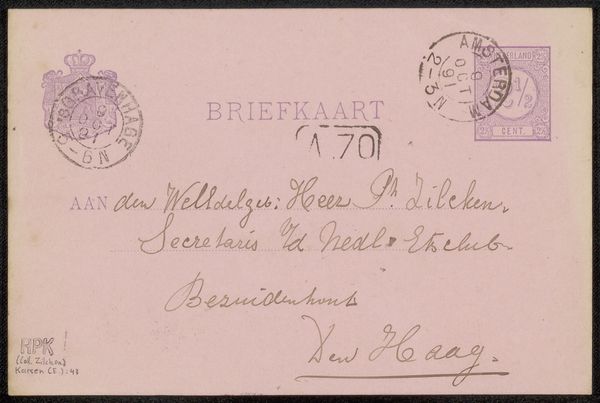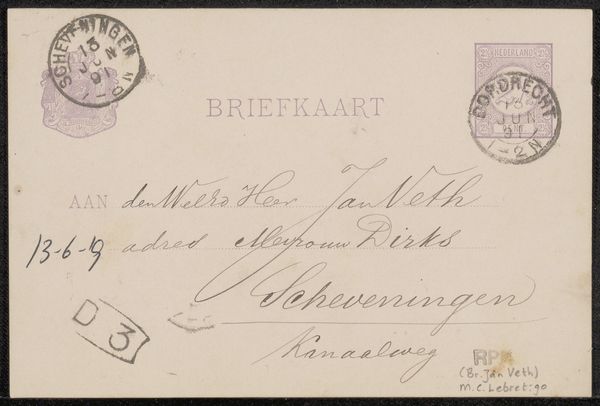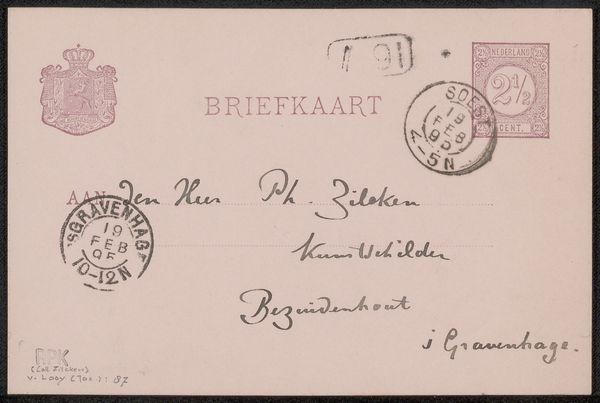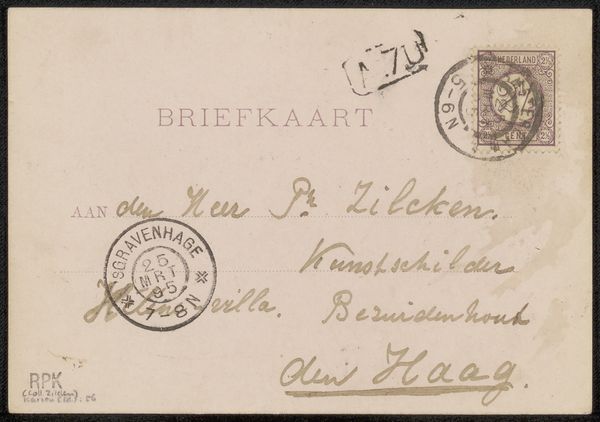
drawing, ink, pen
#
drawing
#
ink drawing
#
pen drawing
#
pen sketch
#
ink
#
pen
#
calligraphy
Copyright: Rijks Museum: Open Domain
Curator: We’re looking at a postcard, "Briefkaart aan Jan Veth," believed to be from around 1886, created by Willem Kloos. It's a simple ink drawing using pen, quite elegant in its simplicity. Editor: Immediately, the formality strikes me – "Aan den Weledelgeb Heer." The almost archaic phrasing elevates the everyday act of sending a note, revealing a societal framework where even brief correspondence adhered to strict codes of conduct, gender and social standing being overtly addressed. Curator: Absolutely. Consider the intended recipient, Jan Veth, also an artist and writer. These figures occupied a specific, interconnected cultural landscape, their exchanges shaped by the prevailing aesthetic and intellectual climate of the time. What power structures were at play between sender and receiver and how does that reflect in their communication methods? Editor: You can see that in the penmanship itself, it speaks to a time of cultivated handwriting and formal correspondence as an art. Even the placement of the stamp and postmarks becomes part of the visual statement, it's meticulously considered, not merely functional. Curator: Precisely. The very existence of this postcard, preserved in an archive, underscores the institutional validation of these cultural figures. We are given insight into who and how and also WHOSE communication habits came to be considered 'art' and ‘history’ for posterity’s sake. The stamp itself is an object loaded with nationalist sentiment, given the symbolic depiction of Dutch heritage, this becomes another crucial aspect in unpacking identity formation for members of the elite. Editor: I notice also, the stamped date of May 5th, 1886, is just a small data point on the back of the card to signify its time. This snapshot shows something about what daily routines, the postal systems, or just common societal practice looked like in the late 19th century Netherlands. Curator: So the value of this work transcends its face-value 'image'. We get a time-capsule into 19th century socio-political discourse and what these key figures from that era viewed as appropriate etiquette. Editor: Exactly. It makes me wonder about all the unspoken words carried on these everyday artifacts, now preserved for scrutiny.
Comments
No comments
Be the first to comment and join the conversation on the ultimate creative platform.
